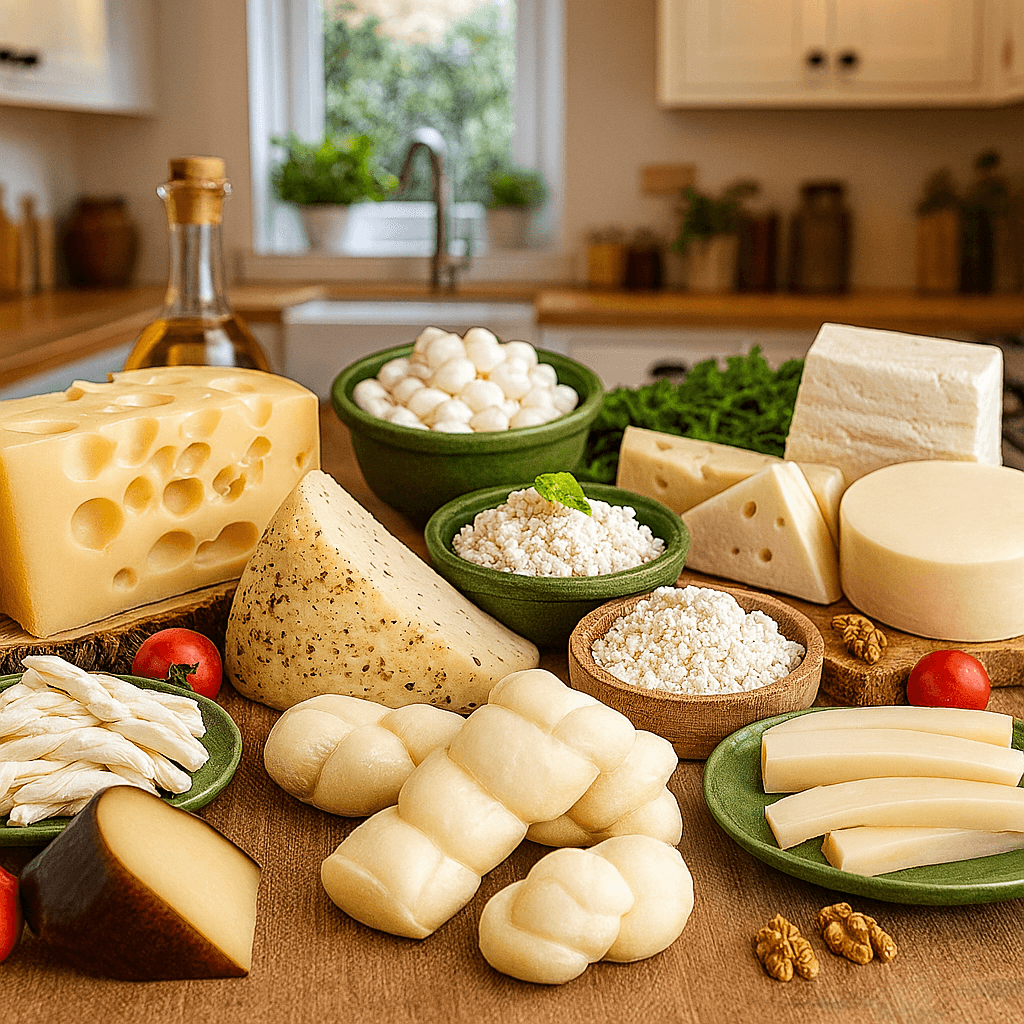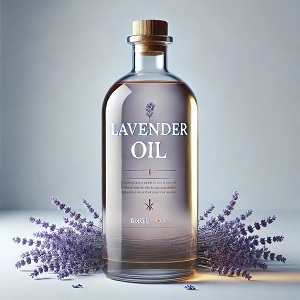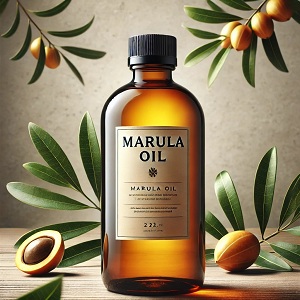
ancestral cream delicacy
🟢 Why Artisanal Natural Cheeses Are Gaining Global Attention
In the health-conscious world, where clean ingredients and top-quality foods are in high demand, natural cheeses have earned a premium spot.
Rooted in ancient dairy traditions and elevated on modern gourmet tables, these cheeses deliver exceptional flavors, deep nutritional value, and rich cultural stories.
Food lovers across Europe, America, and the world embrace them not just for their taste but also for their remarkable health benefits and versatility in numerous recipes.ancestral cream delicacy
🟢 Sheep Milk Cheese (Manchego) – The Nutty Spanish Classic
🟢 The Richness of Manchego
Manchego, made from milk, offers a firm texture with nutty, buttery notes.
Aged to develop complexity, ranging from soft to fully matured.
Europeans and Americans admire its smooth flavor and excellent melting quality.
🟢 Health Benefits
Rich in calcium and phosphorus, supporting strong bones and maintaining skeletal health
Rich in healthy fats and CLA (conjugated linoleic acid).
Better digestibility for lactose-sensitive individuals.
🟢 Pros
Naturally rich and creamy.
Less allergenic than milk cheese.
It pairs beautifully with fruits and charcuterie.
🟢 Cons
Higher in fat.
Costlier than mass-produced cheeses.
Not suitable for vegan diets.
🟢 Golden Tip
Serve with quince paste for an authentic Spanish experience.
🟢 Buffalo Mozzarella – The Italian Fresh Jewel
🟢 Why Buffalo Mozzarella Stands Out
Made from water buffalo milk, this mozzarella is softer, creamier, and richer than its counterparts made from cow’s milk.
A centerpiece in Caprese salads and gourmet pizzas.
Europeans and Americans cherish its luxurious texture.ancestral cream delicacy
🟢 Health Benefits
It is lower in cholesterol than many hard cheeses.
Good source of protein and calcium.
Naturally rich in probiotics when fresh.
🟢 Pros
Incredibly creamy and delicate.
Perfect for light summer dishes.
Low salt content.
🟢 Cons
Highly perishable.
It’s pricier than regular mozzarella.
Limited availability in some markets.
🟢 Golden Tip
Serve at room temperature to fully release its creamy flavor.
🟢 Parmigiano Reggiano – The King of Cheeses
🟢 The Glory of Aged Parmesan
Aged for 12–36 months, Parmigiano Reggiano offers a sharp, nutty, and umami-packed flavor.
Grated, shaved, or eaten in chunks, it elevates pasta, salads, and soups.
Europeans and Americans consider it a must-have pantry staple.ancestral cream delicacy
🟢 Health Benefits
Extremely high in protein and calcium.
Naturally lactose-free due to extended aging.
Rich in essential minerals.
🟢 Pros
Versatile culinary use.
Long shelf life when stored properly.
Intense, satisfying flavor.
🟢 Cons
Hard texture unsuitable for some dishes.
High in sodium.
Expensive when authentic.
🟢 Golden Tip
Always look for the authentic DOP seal to ensure real Parmigiano.
🟢 Pecorino Romano – The Bold Italian Sheep Cheese
🟢 The Salty Power of Pecorino Romano
Made from sheep’s milk, Pecorino Romano is sharp, salty, and perfect for grating.
It’s a classic ingredient in many pasta dishes, especially Cacio e Pepe.
Europeans and Americans love its bold punch.ancestral cream delicacy
🟢 Health Benefits
High in protein and calcium.
Easier on lactose-sensitive individuals.
Rich in vitamins A, B, and healthy fats.
🟢 Pros
Strong flavor enhances simple dishes.
Long shelf life.
Naturally nutrient-dense.
🟢 Cons
Very salty.
Not ideal for low-sodium diets.
Hard texture may limit versatility.
🟢 Golden Tip
Use sparingly to enhance flavors without overwhelming the dish.
🟢 Feta Cheese – The Greek White Treasure
🟢 The Brightness of Feta
Feta offers a crumbly texture with tangy, salty notes.
Made from sheep’s or goat’s milk, it’s perfect for salads, pastries, and omelets.
Europeans and Americans love its refreshing taste.
🟢 Health Benefits
Good source of calcium and phosphorus.
Rich in probiotics for gut health.
Lower fat than many hard cheeses.
🟢 Pros
Versatile in both cold and hot dishes.
Easy to crumble and mix.
Naturally portion-controlled.
🟢 Cons
High in sodium.
Short shelf life once opened.
It may not be suitable for those avoiding dairy.
🟢 Golden Tip
Pair with watermelon for a refreshing summer appetizer.
🟢 Aged Cheddar – The Sharp, Nutty English Classic
🟢 Why Aged Cheddar Remains a Global Favorite
Aged Cheddar develops complex nutty flavors and firm texture over time.
Perfect for sandwiches, sauces, and cheese boards.
Europeans and Americans adore its versatility.
🟢 Health Benefits
High in protein, calcium, and vitamin K2.
Aging reduces lactose content.
Rich flavor allows smaller portions.
🟢Pros
Highly versatile.
Excellent melting quality.
It is affordable compared to many artisan cheeses.
🟢 Cons
Higher in fat and sodium.
Some versions are heavily processed.
It can overwhelm delicate dishes.
🟢 Golden Tip
Select Cheddar aged 18 months or more for maximum depth of flavor.
🟢 Gouda – The Smooth Dutch Creaminess
🟢 Why Gouda Is Beloved in Europe and Beyond
Gouda ranges from young, mild wheels to deeply aged, nutty masterpieces.
Its creamy texture and balanced flavor make it a globally popular choice.
Europeans and Americans enjoy it both plain and melted.
🟢 Health Benefits
Good source of calcium and vitamin B12.
Aging lowers lactose content.
Rich in flavor-enhancing amino acids.
🟢 Pros
Melts beautifully.
Wide range of aging options.
Smooth, approachable taste.
🟢 Cons
High fat and salt content.
Younger versions offer less complexity.
Premium aged Gouda is expensive.
🟢 Golden Tip
Try 24-month-old Gouda for caramel-like crystals and deep flavor.
🟢 Comté – The French Alpine Masterpiece
🟢 The Elegant Complexity of Comté
Comté originates from the Jura Mountains, where it aged for 12-36 months.
It offers nutty, buttery, and subtly fruity notes.
Europeans and Americans value its sophisticated balance.
🟢 Health Benefits
Excellent source of calcium and protein.
Naturally lactose-free.
Rich in vitamin A and omega-3s.
🟢 Pros
Complex, rich flavor.
It pairs wonderfully with wines and fruits.
Melt-friendly for fondue.
🟢 Cons
Premium price point.
Requires proper storage.
Some versions may be hard to find.
🟢 Golden Tip
Serve thin slices at room temperature to fully release its aroma.
🟢 Gruyère – The Swiss Melted Perfection
🟢 The Legendary Gruyère Flavor
Gruyère features a semi-hard texture with a nutty, slightly sweet flavor.
It’s the star of fondue and French onion soup.
Europeans and Americans adore its smooth melt and balanced taste.
🟢 Health Benefits
High in protein and calcium.
It is a good source of phosphorus for bone health.
Lactose-free due to aging.
🟢 Pros
Exceptional melting cheese.
Balanced sweetness and nuttiness.
Versatile for cooking and snacking.
🟢 Cons
Higher in saturated fat.
Expensive for aged versions.
It may overwhelm lighter dishes.
🟢 Golden Tip
Use in gratins and fondues for silky smooth melts.
🟢 The Ultimate Guide to Premium Natural Ghee: Pure Luxury for Modern Healthy Lifestyles
🟢 Why Natural Ghee Has Become the Global Superfast
Across Europe, the Americas, and the broader wellness world, ghee has established itself as one of the cleanest and healthiest fats available.
Unlike processed oils, premium natural ghee delivers ancient nutrition with modern culinary versatility.
Whether used in cooking or for health benefits, each type of ghee offers its unique profile, flavor, and nourishment.
🟢 Ghee (Traditional Cow or Buffalo Ghee)
🟢 The Timeless Golden Butter Oil
Classic ghee is made by gently simmering butter from cow or buffalo milk to remove water, lactose, and impurities.
It creates a pure, shelf-stable fat with a rich, nutty aroma.
Europeans and Americans love it for its high smoke point and traditional healing properties.
🟢 Health Benefits
Naturally lactose-free and casein-free.
Rich in butyrate, supporting gut health and inflammation control.
High smoke point for safe, high-heat cooking.
🟢 Pros
Versatile cooking fat.
Long shelf life.
It supports digestion and metabolism.
🟢 Cons
High in calories and saturated fat.
It may be in some diets.
Needs controlled portion sizes for heart health.
🟢 Golden Tip
Use small amounts to replace processed oils for daily cooking.
🟢 Goat Ghee – The Easy-to-Digest Power Fat
🟢 Why Goat Ghee Is a Rising Star in Digestive Wellness
Goat ghee, derived from goat milk butter, is known for its smaller fat globules and easier digestion.
It carries a gentle, slightly sweet aroma that appeals to sensitive stomachs.
Europeans and Americans with dairy sensitivities seek it as a clean, tolerable alternative to dairy fat.
🟢 Health Benefits
It contains short- and medium-chain fatty acids for quick energy.
Easier on lactose-sensitive individuals.
Packed with vitamin A and minerals.
🟢 Pros
Highly digestible.
Excellent for sensitive individuals.
It has a unique, mild flavor.
🟢 Cons
Rarer and more expensive.
Limited availability.
It’s still high in calories.
🟢 Golden Tip
Perfect for adding richness to soups, teas, and broths for gut-healing benefits.
🟢 Camel Ghee – The Rare Desert Nutrient Source
🟢 Why Camel Ghee Is Gaining Global Prestige
Camel ghee, derived from camel milk butter, is renowned for its high nutritional density.
It has a uniquely earthy, slightly sweet taste that stands apart from all other ghee types.
Europeans and Americans are increasingly curious about its rare immune-boosting properties.
🟢 Health Benefits
Rich in immune-supportive immunoglobulins.
It is lower in cholesterol than many animal fats.
High in vitamin B12 and minerals.
🟢 Pros
Highly nutrient-dense.
Supports immune function.
Unique and luxurious flavor profile.
🟢 Cons
Very rare and expensive.
Limited global production.
The flavor may be unfamiliar to some.
🟢 Golden Tip
Use sparingly as a finishing touch for gourmet dishes to appreciate its distinctive aroma.
🟢 Sheep Ghee – The Creamy, Rich Mediterranean Butter Oil
🟢 Why Sheep Ghee Offers Superior Creaminess
Sheep ghee is intensely creamy with a rich, full-bodied texture and slightly grassy notes.
Gaining attention globally for its higher vitamin and mineral content.
Europeans and Americans enjoy its richness in both savory and sweet recipes.
🟢 Health Benefits
Higher levels of calcium, phosphorus, and vitamin A.
anti-inflammatory effects.
Naturally free from lactose.
🟢 Pros
Extremely nutrient-rich.
Delicate, buttery flavor.
Excellent for high-heat cooking.
🟢 Cons
The heavier flavor may overpower light dishes.
It’s more expensive than cow ghee.
Limited availability outside specialty stores.
🟢 Golden Tip
Blend into mashed vegetables or risotto for a luxurious, creamy finish.
🟢 Buffalo Ghee – The Bold, Deeply Nourishing Fat
🟢 Why Buffalo Ghee Is the Powerhouse of Ghee World
Buffalo ghee is denser, richer, and darker than cow ghee.
Its higher fat content gives it a robust mouthfeel ideal for slow cooking and deep-flavored recipes.
Europeans and Americans value it for its richness in winter nutrition and energy.
🟢 Health Benefits
Higher content of omega-3 and omega-6 fats.
Supports energy and endurance.
Packed with vitamins D, A, and K.
🟢 Pros
Excellent for stamina and cold climates.
Ultra-smooth consistency.
Superior in stews and baked goods.
🟢 Cons
Very high-calorie density.
Overuse may contribute to weight gain.
Heavier flavor is not ideal for every palate.
🟢 Golden Tip
Use in small amounts to enhance sauces and slow-cooked meats.
🟢 Grass-fed Ghee – The Nutritional Gold Standard
🟢 Why Grass-fed Ghee Is the Clean Eating Favorite
Made from the butter of grass-fed cows, this ghee offers superior nutrition and a clean buttery aroma.
Europeans and Americans on keto, paleo, and clean diets favor it as a daily superfast.
Its vibrant yellow hue reflects its superior beta-carotene levels.
🟢 Health Benefits
Higher in omega-3s and vitamin K2.
Supports cardiovascular health.
More antioxidants than grain-fed versions.
🟢 Pros
The purest form of natural fat.
Ideal for clean diets.
Smooth and mild flavor.
🟢 Cons
More expensive than conventional ghee.
Availability varies by region.
It still requires portion control.
🟢 Golden Tip
Use as your primary cooking fat for sautéing, baking, and coffee blends.
🟢 Cultured Ghee – The Digestive Healing Superfood
🟢 Why Cultured Ghee Is the Gut Health Champion
Cultured ghee, made from fermented butter, breaks down milk sugars even further.
It offers enhanced digestibility for individuals who are particularly sensitive to certain foods.
Europeans and Americans value it for both cooking and therapeutic uses.
🟢 Health Benefits
Nearly zero lactose and casein.
Enhanced probiotic fermentation benefits.
Supports gut lining and nutrient absorption.
🟢 Pros
Ultra-gentle for digestion.
Rich, complex flavor.
Perfect for therapeutic diets.
🟢 Cons
It’s harder to find.
It is more costly due to the production method.
Limited large-scale availability.
🟢 Golden Tip
Use in your morning coffee or herbal teas for maximum gut-soothing effect.


